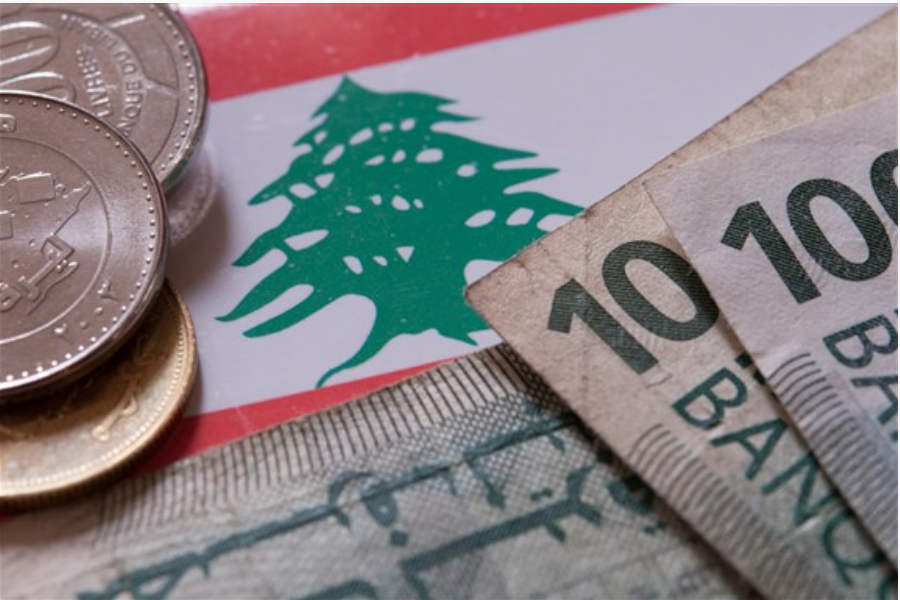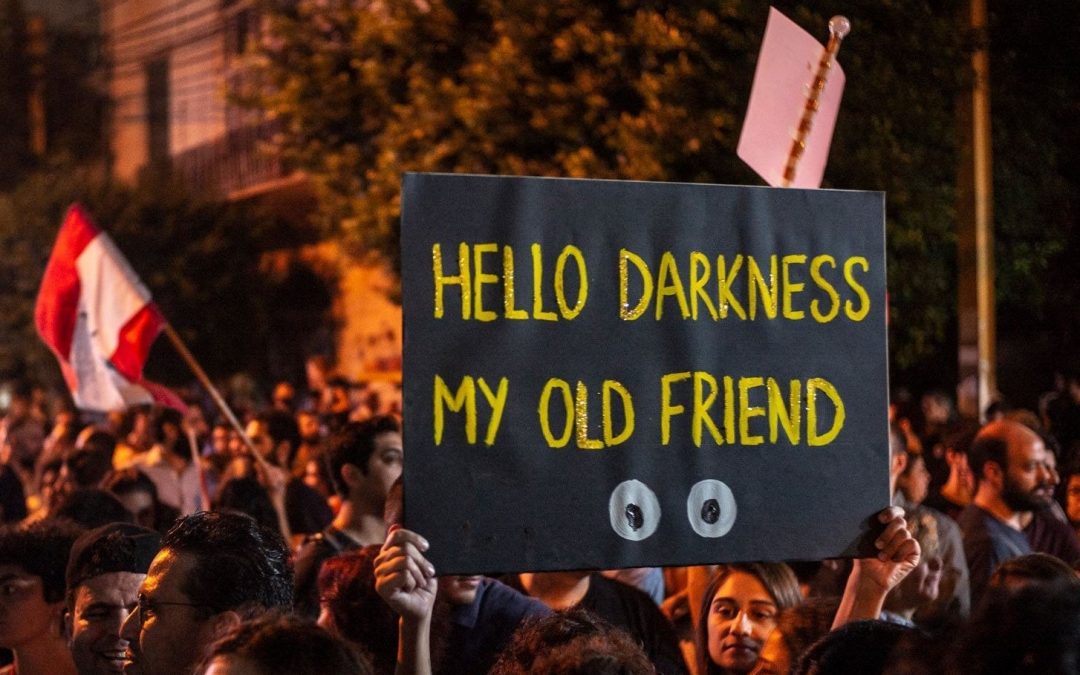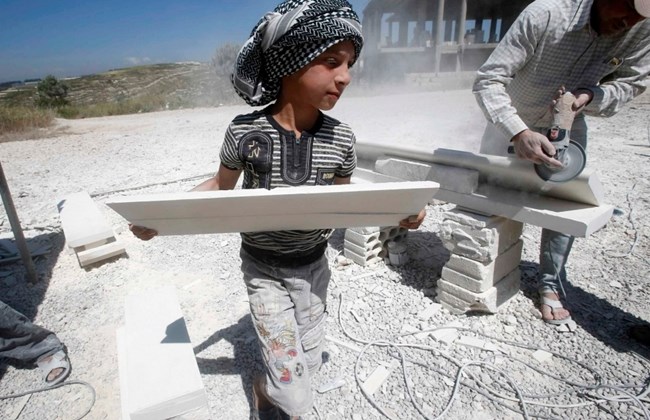
by Lea El Halabi | Apr 15, 2022 | Generic, Visualization
Does a Country’s Borrowing Policy Affect its Population’s Income level?
The Case of Lebanon

DOLLAR? LBP?
WHAT’S THE EXCHANGE RATE TODAY?
DISCOUNTING CHECKS? AT WHAT RATE?
WHAT???? 20%????
THIS MEANS I’M LOSING 80% OF MY MONEY!!!
I WAS DOING OK BUT NOW I CAN BARELY MAKE ENDS MEET…
This has unfortunately been the sad reality that
theLebanese people have been living for since
October of 2019.
WHY?
Because a Banking | Financial | Currency | Crisis
Made a Huge Bubble Burst!

BUT HOW DID WE GET HERE?

Lebanon has had a budget deficit for over 20 years
and has been borrowing from external parties
for as long as we can remember.
So, as Lebanese citizens, we are born indebted.
A country’s national debt affects its population’s income level:
-
Growing debt has a direct effect on economic opportunities
-
If high levels of debt crowd out private investments, workers would have less to jobs do and therefore earn lower wages

Countries with LOWER DEBT exhibit HIGHER INCOME levels per capita.
SO HOW HAS LEBANON’S DEBT BEEN CHANGING OVER TIME?

WHAT CAN WE DO TO MAKE THINGS BETTER?

Potential Solutions include but are not limited to:
-
Supporting Production and Services Sectors leading to more Job Creation and eventually More Wages
-
Improving Trade Agreements leads to more exports which would Reduce Budget Deficits and make the country economically healthier
-
Attracting Foreign Direct Investments by providing a healthy capital market (ex: improving Reporting Practices) which leads to More Investments & More economic opportunities, More Jobs and eventually More wages
IS THERE PROOF?
Countries with Open Trade Policies seem to have higher income levels

Countries with Updated Reporting Practices also have higher income levels

SO, WHAT ARE THE RECOMMENDATIONS?
STOP borrowing from international Agencies
CONTROL High National Debt Levels
Implement Policies to boost the economy


by Serge Boyajian | Apr 15, 2022 | Uncategorized
“Quis custodiet ipsos custodes?”
Lebanon, a Small Country with Huge Worries
If you’re reading this blog, you are more privileged than 78% of the Lebanese population! The United Nations stated that 78% live under the line of poverty in 2021. Let me walk you through all the evidences and solution. GDP per capita is a perfect metric to measure the economic conditions of a country’s citizens: Lebanon’s GDP per capita plunged to a negative 21% growth in 2020. However, a bigger problem looms over Lebanon: It is far from being able to meet the UN’s 2030 Agenda, more specifically, section 8 related to economic factors. Section 8.1.1 in the 2030 Agenda requires all countries to sustain a 7% GDP per capita growth.
How can Lebanon Catch Up?
The answer is straightforward: Secure Foreign Funds! To secure such funds from international institutions like the IMF or World Bank, the Lebanese Government should implement quick local economic reforms.
The secured funds will then be used to transform Lebanon from a major importer to a major exporter. The funds must be invested in local production, tourism and domestic spending (infrastructure). This can definitely boost Lebanon’s GDP among several other reforms in different sectors.
Is it Really a Good Idea?
Many people are skeptical on borrowing from international institutions like the IMF due to the severity of their rules. However, let’s take Egypt as an example: Egypt increased IMF borrowings by 1,500% from 2015 till 2020 (yup, you read right, no additional zeros). The Egyptian government spent the funds on enforcing its local production and improving the tourism sector. As a result, Egypt met the UN’s Agenda 2030 economic goals and especially goal 8.1.1 (GDP per capita growth > 7%).
Recommendation
The one and only recommendation is for the Lebanese government: Implement the needed reforms, secure the foreign funds, invest them wisely and save Lebanon from the catastrophe!

by Tamar Gebrael | Nov 25, 2021 | Dashboard, Visualization
How many hours do you have access to electricity? At what time are the generators turned off in your region? How much was your electricity bill last month?
These questions might sound unfamiliar for citizens in many countries. However, they became part of any discussion in Lebanon reflecting the limited access to power for the majority of the population.
Which areas suffer from this same problem?
Most of the countries having energy shortage are located in Sub-Saharan Africa. For example, in South Sudan, Burundi and Chad, less than 10% of the entire population have access to electricity

Comparing the distribution of the average access to electricity between rural and urban areas, it can be observed that urban areas have more power access. Subsequently, countries having energy deficiency should consider using international funds for the installation of power distribution systems in rural areas.
What about Lebanon?
Although this country has a very remarkable amount of water resources, its hydraulic energy production is insignificant compared to its thermal energy production. Correspondingly, decisions should be taken to make use of our rich water assets.
The map shown below represents the distribution of the power stations in Lebanon.

Source: https://www.sciencedirect.com/science/article/abs/pii/S1364032112006259
Lebanon doesn’t have enough power stations which affects the power distribution among the areas and causes loss of energy in the transmission lines. Accordingly, the government should consider creating more thermal and hydraulic energy auxiliary stations to secure an even electricity distribution among all areas.
To increase electricity access, it’s recommended that the governments of developing countries take action by using wisely the international funds for the installation of power generation plants and transmission networks to cover all population needs (in all areas), taking into consideration economical and social conditions. Transparency in government should be followed by spreading public awareness to find and support policies that manage assets like coal, oil and gas as a source of energy and income. Moreover, the use of renewable sources including hydroelectric energy is an important step to generate electricity in both rural and urban areas.
Resources:
World bank data : https://datacatalog.worldbank.org/home
Open data Lebanon: https://www.opendatalebanon.org/

by gwk01 | Nov 23, 2021 | Visualization
It was 11:00 am on a Monday when I saw a nine-year-old boy, Bilal, lifting heavy rocks in a construction site. How many Bilals, children who toil long hours for a low wage, deprive themselves of education, and endure frequent violence and abuse just to financially support their families, do we meet daily?
Based on a study conducted by the Lebanese ministry of labor in 2013, there are almost 180,000 children working in Lebanon. Today, Lebanon is experiencing a huge decline in its gross domestic income (GDI). GDI is an economical metric that showcases the nation’s social welfare, and its deterioration results in more people living below 50% of the median income, and vice versa.

Thus, poverty is increasing in Lebanon, and more children as Bilal are being robbed of their childhood. The Lebanese government and supporting international organizations can take many initiatives to save Bilal and his friends; however, not all might have a fast and radical impact on the children labor phenomena. While observing international cases, through World Development Indicators dataset, I noticed that countries, which most of their population have access to electricity, have a lower percentage of poverty; thus, a lower number of employed children, and vice versa.

When power resources are available to the nation, people will have access to technologies, especially the internet. There are numerous internet usages that can create life opportunities for the individuals; for example, Bilal can access the internet to enroll in educational programs.

Considering the above, I appeal to the government and concerned institutions to utilize all their endeavors in providing a sustainable electrical solution for our children to live a “normal” life and have the chance to prosper.

by Sara Harba | Nov 11, 2021 | Dashboard, Visualization
Do you know that at least one person dies per day as a result of a car crash in Lebanon? and that most probably this person’s ages between 5 and 29 years?
Roads are shared by various users with different levels of risk exposure between cars, buses, trucks, motorcycles, mopeds, pedestrians, and other travelers. Globally, road traffic crashes became one of the leading causes of death and, unfortunately, the number is rapidly increasing year after year.
Besides the shared worldwide factors, Lebanon suffers from unsafe road infrastructure and inadequate traffic law enforcement, which makes road traffic deaths a more serious and critical problem.
Every year around this time, during the festive season, an increase in road crashes is noticed in Lebanon. We, a team of Master’s in Business Analytics students at AUB, decided to address this problem, as part of our curriculum requirements, aiming to create an impact by raising social awareness and providing institutions that are keen about road safety with measurable and effective methodologies.
We designed an interactive dashboard that highlights the effect that road traffic strategies applied around the world have on the frequency of crashes and compared it to the frequency in Lebanon. Also, the dashboard showcases some of the risk factors and their preventive procedures to help in limiting road traffic injuries. The proposed solutions are backed by visualizations performed on data published by the WHO on road traffic injuries.
If you are interested in understanding the reasons associated with high road death rates in Lebanon, have a look into our dashboard and let us know what do you think below in the comments!
This was created by Sara Bou Hamdan, Nohra Chaghouri, Johny El Achkar, Sara Harba, and Ghina Koteich


















